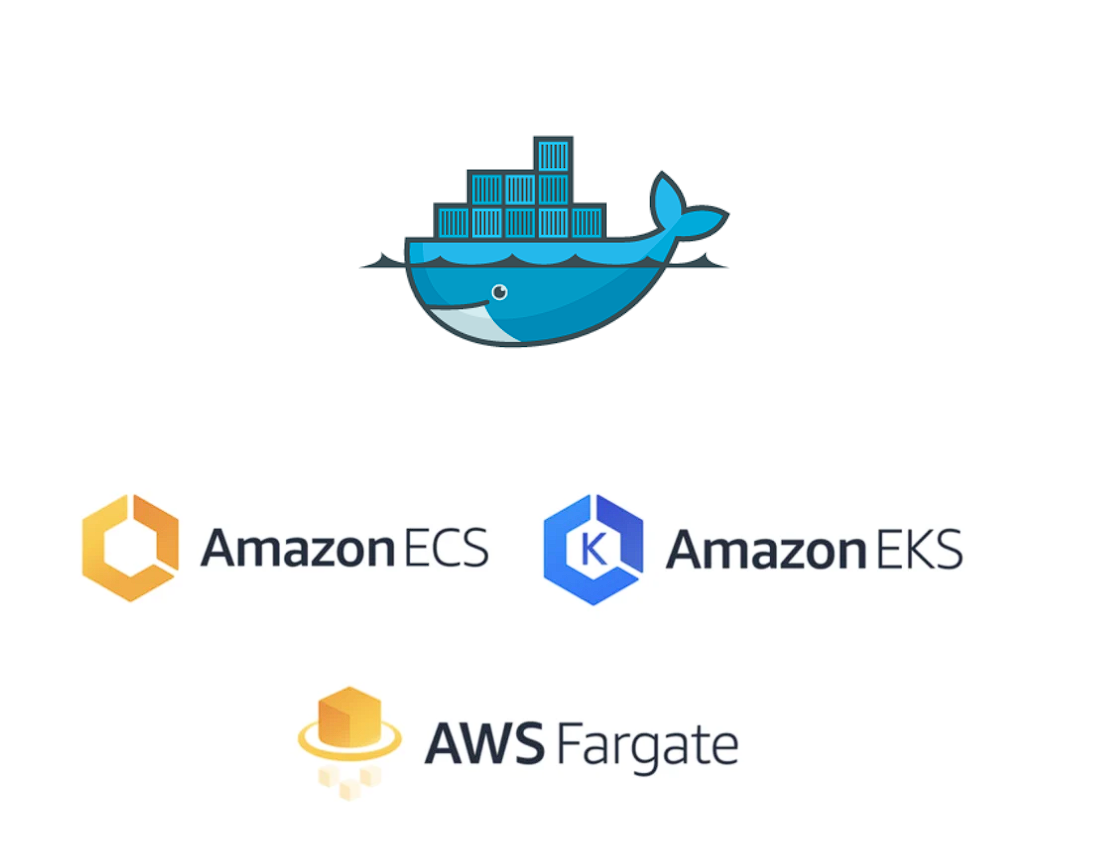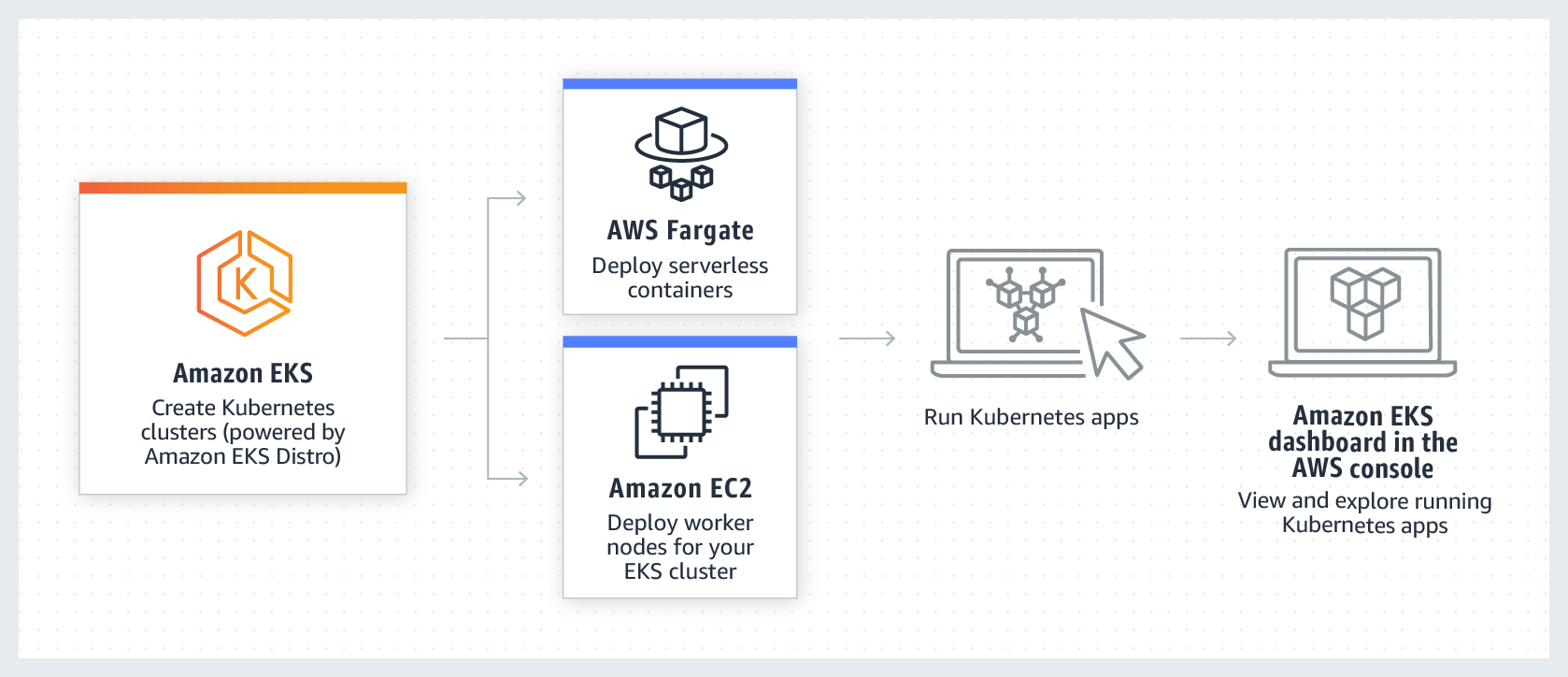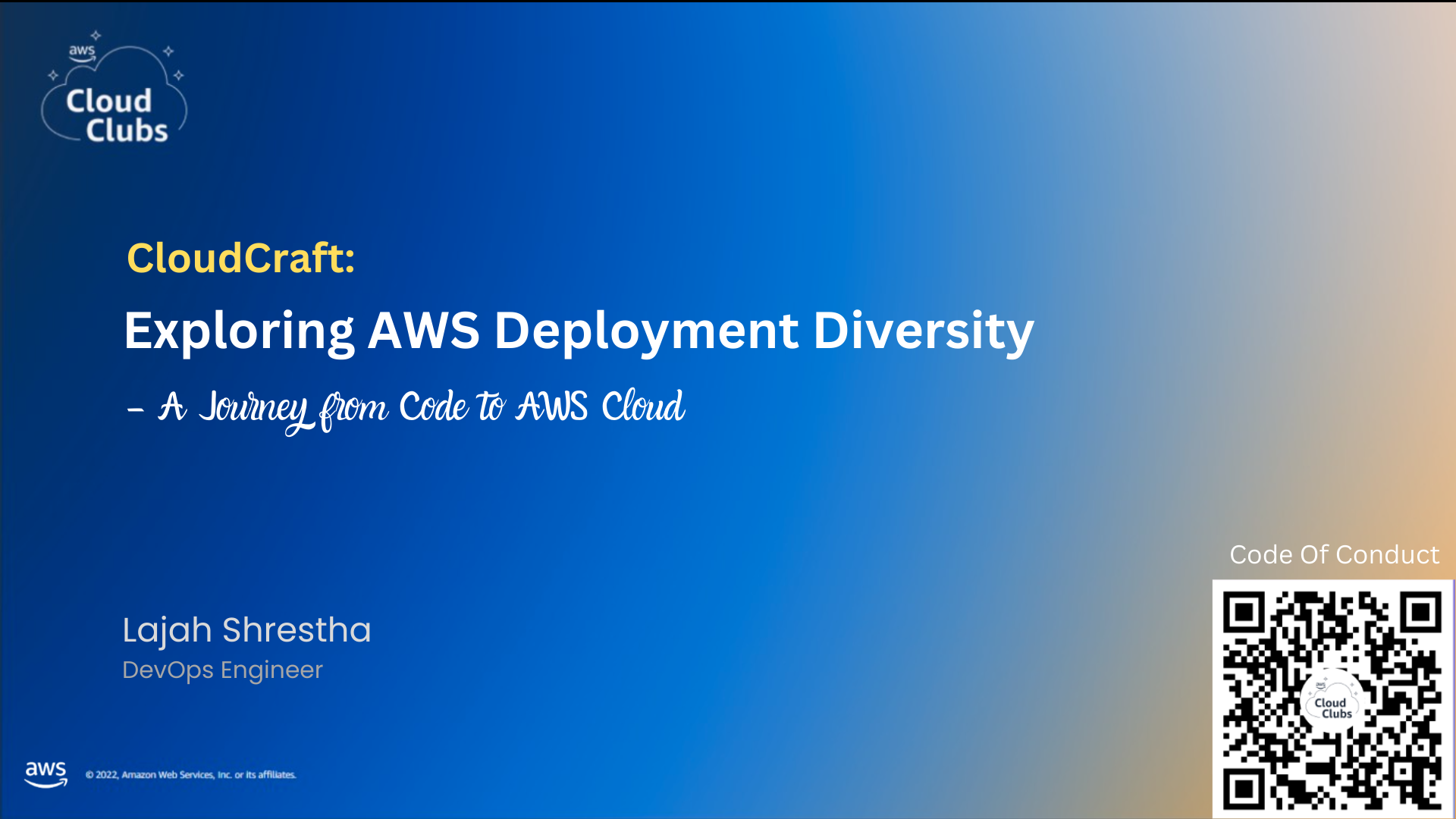Exploring AWS Deployment Diversity
 Lajah Shrestha
Lajah Shrestha
In the expansive realm of cloud computing, Amazon Web Services (AWS) emerges as a formidable force, offering an extensive suite of services designed to cater to the multifaceted needs of businesses and developers alike. As we embark on our exploration of AWS deployment options, it is imperative to grasp the foundational services that underpin this cloud ecosystem.
AWS encompasses a myriad of cloud computing services, spanning computing power, storage, databases, machine learning, and more. These services collectively empower organizations to build, deploy, and scale applications with unparalleled flexibility and efficiency.
B. Understanding Deployment Needs
To navigate the AWS cloud effectively, it is crucial to discern the factors influencing deployment choices. Scalability, ease of management, and resource optimization are pivotal considerations in crafting a deployment strategy tailored to specific project requirements. As we delve into the intricacies of AWS deployment options, we will explore how each method aligns with these critical considerations.
AWS Deployment Methods
A. Traditional Deployment on EC2
Traditional deployment on Elastic Compute Cloud (EC2) instances involves manually deploying code on virtual machines. This method provides a high level of control over the infrastructure, making it suitable for scenarios where fine-tuning at the infrastructure level is paramount. It is particularly favored in applications where specific configurations and dedicated resources are essential.

Pros:
Fine-Grained Control: Traditional deployment on EC2 provides developers with complete control over the underlying infrastructure, allowing for customized configurations and security settings.
Versatility: Suitable for a wide range of applications, especially those with specific infrastructure requirements.
Legacy Application Support: Ideal for hosting legacy applications that may not be easily containerized.
B. Containerization on EC2
Containerization, epitomized by Docker, has transformed the deployment landscape. AWS supports this paradigm through services like Docker on EC2. Containerization allows for packaging applications and their dependencies, ensuring consistency across different environments. This method is preferred in microservices architectures, providing agility and scalability by encapsulating services in lightweight, portable containers.

Pros:
Portability: Containers encapsulate applications and dependencies, ensuring consistency across different environments and easing deployment across various platforms.
Scalability: Well-suited for microservices architectures, allowing each service to scale independently, enhancing overall system scalability.
Resource Efficiency: Containers share the host OS kernel, leading to more efficient resource utilization compared to traditional VMs.
C. AWS Elastic Beanstalk
AWS Elastic Beanstalk abstracts away infrastructure details, streamlining the deployment process for developers. It is an excellent choice for projects where simplicity and rapid deployment are prioritized. Elastic Beanstalk is particularly suitable for web applications and services where developers want to focus more on coding and less on infrastructure management.

Pros:
Simplicity: Abstracts away infrastructure details, making it easy for developers to deploy applications without worrying about underlying infrastructure configurations.
Rapid Deployment: Well-suited for projects that require quick iterations and frequent updates, enabling rapid deployment of web applications.
Automatic Scaling: Elastic Beanstalk provides automated scaling capabilities based on application demand.
D. AWS Amplify
AWS Amplify is a platform tailored for developing and deploying web and mobile applications seamlessly. It excels in scenarios where quick iterations, continuous deployment, and scalability are essential. Amplify simplifies the deployment process, making it an ideal choice for projects with a strong focus on frontend and mobile development.

Pros:
Streamlined Development: Simplifies the development and deployment of web and mobile applications, enabling developers to focus on code rather than infrastructure.
Continuous Deployment: Integrates seamlessly with version control systems, allowing for continuous deployment and delivery.
Backend Integration: Provides backend services, making it suitable for full-stack development and enabling developers to build scalable serverless applications.
E. Amazon ECS (Elastic Container Service)
Amazon ECS facilitates container orchestration at scale. This method is preferred in microservices architectures, offering efficient management and deployment of containerized applications. ECS allows developers to run, stop, and manage Docker containers on a cluster of EC2 instances, providing flexibility and scalability for containerized workloads.

Pros:
Container Orchestration: Efficiently manages and deploys containerized applications at scale, ideal for microservices architectures.
Integration with AWS Services: Seamless integration with other AWS services, enabling enhanced functionality for containerized applications.
Customization: Provides flexibility in defining networking, security, and scaling configurations for containerized workloads.
F. Kubernetes Cluster on AWS (EKS)
For those delving into the realm of Kubernetes, AWS provides Elastic Kubernetes Service (EKS). Kubernetes is ideal for orchestrating and managing containerized applications in a microservices architecture. EKS simplifies Kubernetes deployment, making it suitable for projects that demand the advanced orchestration capabilities of Kubernetes, especially in large-scale applications.

Pros:
Advanced Orchestration: Kubernetes offers advanced container orchestration capabilities, facilitating the management of complex microservices architectures.
Community Support: Being an open-source platform, Kubernetes benefits from a vast and active community, ensuring continuous improvement and support.
Multi-Cloud Deployment: EKS enables deploying Kubernetes clusters across multiple cloud providers, enhancing flexibility and avoiding vendor lock-in.
G. Serverless Deployments with AWS Lambda
The serverless architecture, exemplified by AWS Lambda, has gained prominence for its efficiency and cost-effectiveness. AWS Lambda allows developers to execute code without managing traditional server infrastructure. It is particularly favored in scenarios where event-driven, short-lived functions are sufficient, making it ideal for microservices architectures and applications with sporadic workloads.

Pros:
Cost-Efficiency: Pay only for the compute time consumed, making it cost-effective for sporadically used functions and applications with variable workloads.
Scalability: Scales automatically in response to incoming requests, ensuring optimal performance without the need for manual intervention.
Event-Driven Architecture: Well-suited for event-driven architectures and microservices, allowing developers to focus on writing code rather than managing infrastructure.
In this comprehensive exploration of AWS deployment diversity, it becomes evident that each method caters to specific use cases and preferences. Whether you seek fine-grained control, simplicity, or scalability, AWS provides a deployment solution tailored to your project's unique demands.

Subscribe to my newsletter
Read articles from Lajah Shrestha directly inside your inbox. Subscribe to the newsletter, and don't miss out.
Written by
